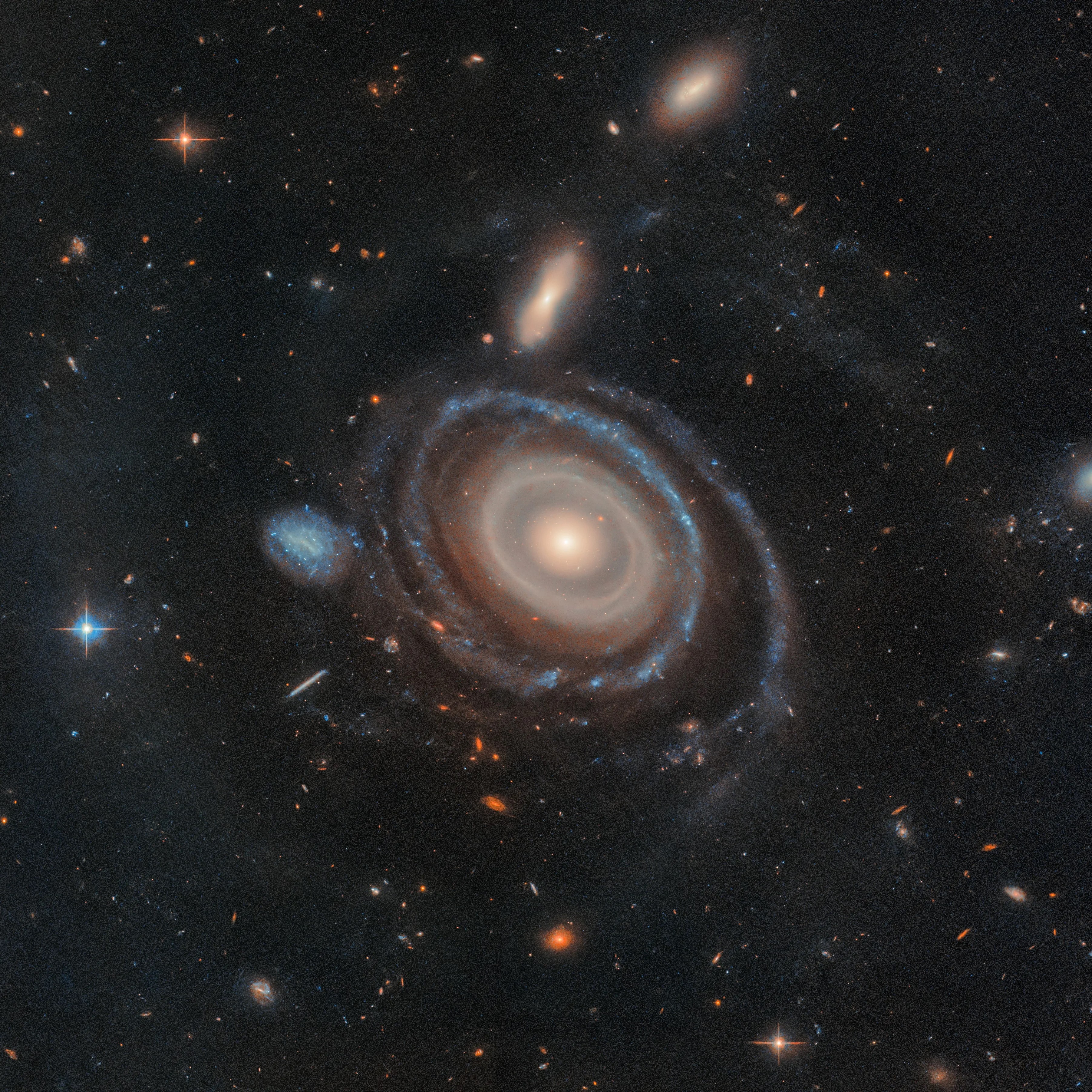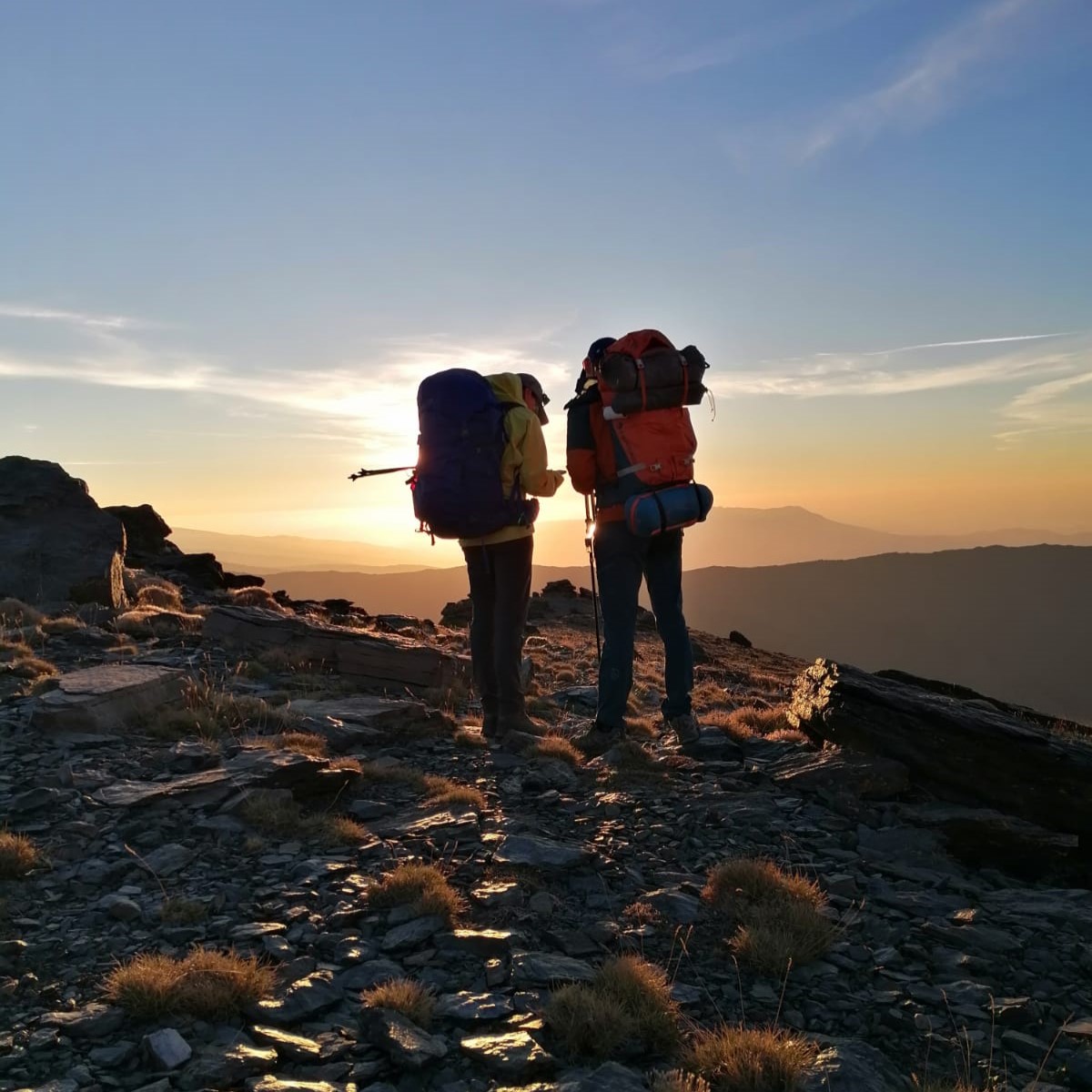My research
BEFORE THE PHD
After finishing high school at my hometown, Galapagar, I studied space engineering at the Polytechnic University of Madrid (UPM, Madrid, Spain). I was really interested in the practical side of physics, specially about space stuff. My bachelors thesis started my career as a researcher. I spent several months working at the Spanish User Support and Operations Centre (E-USOC) in Madrid, where I prepared and analysed computational fluid dynamics simulations. We were interested in the Phase Change Materials (PCMs) for cooling spaceships. I focused my work in cylindrical liquid-bridges both under gravity and micro-gravity conditions. We published two papers (see the publications section!).
Then, I did a Master's degree in space science and technology at the University of the Basque Country (EHU, Bilbao, Spain). There, I specialized in astronomy, where I learnt about the milky way, planet atmospheres, stellar physics, instrumentation and telescopes, and many other things. My Master's thesis consisted on developing the Galway Liverpool Imaging Polarimeter (GLIP). It is a polarimeter concept that would perform simultaneous circular and linear polarimetry in three colour bands. Four images allow determination of the Stokes Polarisation parameters. We published a proceeding at the 2022 SPIE conference.
Just before coming to Granada to do my PhD thesis, I spent 4 months in Tenerife (Spain) at the Insituto de Astrofísica de Canarias (IAC). There, I studied the use of cryogenics and opto-mechanics to cool down detectors for the observatories. We used Peltier technology, that, thanks to it simplicity, have very high stability, both thermal an mechanical. I gave a seminar to the institute at the end, a really nice experience.

MY THESIS
In 2021 I moved to Granada (Spain) to do a PhD thesis at the Instituto de Astrofísica de Andalucía, which I hope to defend soon. My PhD thesis is not very prototypical. I come from an engineering background, but I have gone through astronomy too. Because of this, my work shares a bit of both worlds. I am part of the CARMENES consortium, and the first part of my thesis consisted in upgrading the CARMENES-NIR channel performance, with excellent results (Varas et al. 2025, submitted). We improved the cooling system, what translated into better stability and better radial velocity precision, below the 1 m/s since June 2022.
Then, I started working with CARMENES data, in particular with the coolest stars, the ultracool dwarfs, of the CARMENES sample. I try to better understand their behaviour and look for exoplanets around them. This objects are very challenging: they are very faint and active, so we are trying to better handle and reduce the data. I have also gained experience at observing with telescopes, such as the GTC in La Palma, the biggest in the world. During the thesis, I also worked with photometric data from the Sierra Nevada Observatory, PANIC (Calar Alto Observatory) and the TESS space mission.

SPECULOOS-3
One of the more exciting projects I have participated on is the discovery of an earh-like planet around the SPECULOOS-3 star [Detection of an Earth-sized exoplanet orbiting the nearby ultracool dwarf star SPECULOOS-3]. This is a big collaboration around the globe, and together with my colleagues at the IAA, we were able to help on this study thanks to CARMENES data. Our main contribution was to estimate the projected rotational velocity of the star using our CARMENES data. Nevertheless, we have not stopped working on this system, because it is fascinating. We still have more radial velocity data, and we are carefully analysing it. Working in such an impactful and interesting topic is one of the main reasons why I (and many other people) do science.

CARMENES-PLUS
A big part of my early work in the PhD thesis involved engineering tasks. CARMENES (Calar Alto high-Resolution search for M dwarfs with Exoearths with Near-infrared and optical Échelle Spectrographs) is a next-generation instrument built for the 3.5m telescope at the Calar Alto Observatory by a consortium of German and Spanish institutions, that observes in the visible and near-infrared. CARMENES near-infrared channel (or CARMENES-NIR) is cooled down to achieve very precise radial velocity measurements. Our main targets are very faint stars, the M-dwarfs. Because they are very faint, the thermal conditions and stability we need in CARMENES-NIR while observing are very extreme. We worked from 2020 to 2022 improving its cooling system. By stabilizing the nitrogen gas flow and refilling properly the liquid nitrogen, we were able to improve the CARMENES-NIR radial velocity precision below the 1 m/s. You can read the published article: Improving radial velocity precision with CARMENES-PLUS.

PROJECTED ROTATIONAL VELOCITY AND LIMB DARKENING
The projected rotational velocity (v·sin(i)) of a star is a very important value, because we can then properly derive other stellar parameters, better understanding the star, such as its age, metallicity or activity. For fast rotating stars is also key for accurately compute the radial velocities for exoplanet search. I have computed the projected rotational velocity of all the CARMENES sample using the serval pipeline. I have compare all the available values in the literature to check how robust is our method, correct some values from the literature and compute more than 30 new values.
We also made an extensive analysis of the limb darkening effect when computing this parameter, especially important for the coolest stars. First, with synthetic models we demonstrate that it actually changes the shape of the spectral lines, which has an impact on the projected rotational velocity we estimate. Then, we evaluate the impact of the limb darkening on our results. We just submitted our work, titled "The CARMENES M-dwarf projected rotational velocity catalogue: a homogeneous analysis accounting for limb darkening", to Astronomy & Astrophysics. The results are also available in GitHub.

PUBLIACTIONS AND PROCEEDINGS
1. The CARMENES M-dwarf projected rotational velocity catalogue: a homogeneous analysis accounting for limb darkening, R. Varas et al., submitted to A&A, 2025.
2. Improving radial velocity precision with CARMENES-PLUS: An upgrade of the near-infrared spectrograph cooling system, R. Varas et al., Experimental Astronomy, vol. 60, article number 10, September 2025.
3. Detection of an Earth-sized exoplanet orbiting the nearby ultracool dwarf star SPECULOOS 3, M. Gillon et al. (including R. Varas), Nature Astronomy, vol. 8, 865-878, May 2024.
4. Effects of Thermocapillary and Natural Convection During the Melting of PCMs with a Liquid Bridge Geometry, R. Varas et al., Microgravity Science and Technology, vol. 35, A17, March 2023.
5. Thermocapillary effects during the melting i n microgravity of phase change materials with a liquid bridge geometry, R. Varas et al., International Journal of Heat and Mass Transfer, vol. 178, 121586, October 2021.
6. The CARMENES search for exoplanets around M dwarfs - The impact of rotation and magnetic fields on the radial velocity jitter in cool stars, H. L. Ruh et al. (including R. Varas), A&A, vol. 692, A138, December 2024.
7. Hunting exoplanets around latest M dwarfs with RV NIR-spectrographs, R. Varas et al., XVI Scientific Meeting of the Spanish Astronomical Society, July 2024.
8. ANDES, the high resolution spectrograph for the ELT: science case, baseline design and path to construction, A. Marconi et al. (including R. Varas), Ground-based and Airborne Instrumentation for Astronomy IX (SPIE), August 2022.
9. Galway Liverpool Imaging Polarimeter – GLIP: design and prototype status, E. G. P. O'Connoret al. (including R. Varas), Ground-based and Airborne Instrumentation for Astronomy IX (SPIE), August 2022.
More about me



OUTREACH
I, as many other people that do science, love to share my work with anybady who might be interested in astronomy. I have to admit that us, astronomers, have luck with outreach, because it really awakens something inside many people. I have been volunteer in many activities, such as the PIIISA project, the 100xCiencia.7 conference, and many others. I also had the great opportunity to give a talk at the European Researchers Night, Espacio 3 and the Pint of Science.
On this activities, I talked about different things, from the possible existence of galactic civilizations, to the huge variety of stars, even the super-interesting and not very-well known brown dwarfs. I should admit that the best part of giving these talks is to have the opportunity to talk about work in a more relaxed environment, interacting with the audience, listening and answering all the questions, some times not very easy to answer, but always interesting.
EQUITY, DIVERSITY and INCLUSION
As many studies have conclude, diversity improves science [Science benefits from diversity]. I am a member of the Equity, Diversity and Inclusion (EDI) committee at the IAA, where we look to make our workplace more inclusive and comfortable for everybody. We also do outreach and training activities inside the institute and with schools outside our center.
The next European Astronomical Society meeting (EAS 2025), I am a co-chair of the Special Session An Intersectional Approach to EDI Strategies (SS51). Having these spaces in such big and important conferences is key for science, for people to feel safe and to build the world we dream of, with equity and inclusion, where diversity is what it already is, a part of humanity.
MY HOBBIES
Apart of working, I love to do many activities. I climb regularly, as well as go to the mountain for a hike or a photography session (Look at my gallery below!). Thank to my parents I do also love reading, and even though my taste is kind of atypical, I would really like any recommendation you may have. Hanging out with my friends or listening to a good session of music (also weird taste, by the way) is also something I really like. I recently changed painting for pottery, and I strongly recommend to try it.
The best of all is that Granada, where I currently live, allows me to do all these activities! There are super nice places for hiking and climbing, and very close to the city (I don't even have a car). It is also a very active city, with many activities and people, a lot of them university students. And the best of Granada, along with the Alhambra: the tapas, this food rations you are served just for asking for a drink. Yeah, sound too good to be real, but believe me, it is even better than it sounds.